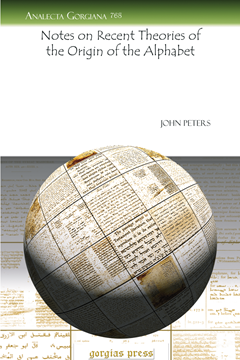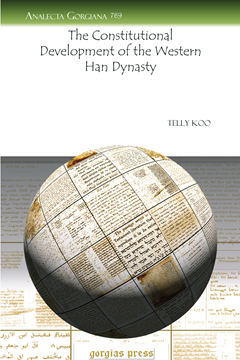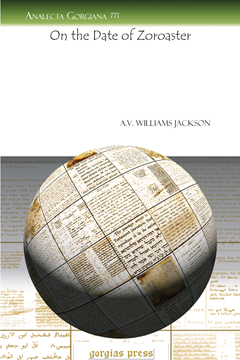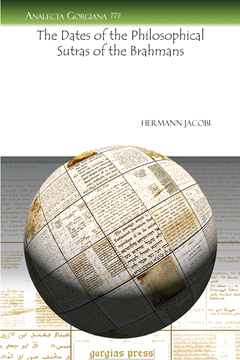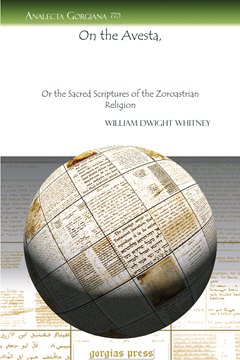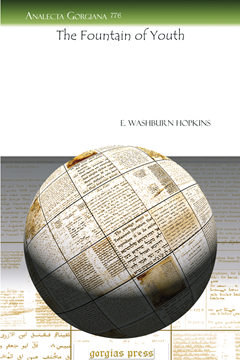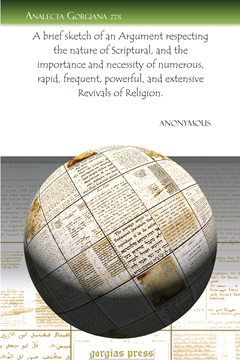Notes on Recent Theories of the Origin of the Alphabet
By John Peters
Series: Analecta Gorgiana 768
ISBN: 978-1-61143-146-9
The author’s intent is to continue a search about the origins of the Phoenician alphabet and whether it has a connection to old Babylonian and Egyptian. Up until this point, no satisfactory connection has been made to the Babylonian syllabaries.
$35.00 (USD)
The Constitutional Development of the Western Han Dynasty
By Telly Koo
Series: Analecta Gorgiana 769
ISBN: 978-1-61143-147-6
The Western Han dynasty was one of the most successful period in Chinese history. They drastically transformed the government from the ways of the Chou monarchs, which was the basis for subsequent dynasties.
$36.00 (USD)
On the Date of Zoroaster
Series: Analecta Gorgiana 771
ISBN: 978-1-61143-149-0
Wide diversity prevails with regard to the date which Zoroaster lived. This diversity is largely due to incongruities in ancient statements on the subject. One can reasonably conclude that he lived between the seventh and sixth centuries B.C.E.
$35.00 (USD)
The Dates of the Philosophical Sutras of the Brahmans
Series: Analecta Gorgiana 772
ISBN: 978-1-61143-150-6
The author is concerned with finding the dates of composition of the Buddhist doctrines the Sunyavada and the Vijnanavada. It was concluded that the Vijnanavada was arranged later than the Sunyavada.
$37.00 (USD)
The Mystery of Fu-lin
Series: Analecta Gorgiana 773
ISBN: 978-1-61143-151-3
Several Chinese literary accounts attest that the mysterious country in the west called Fu-lin is declared to be identical with the country from ancient times known as Ta-ts’in. The author does not believe that they are one in the same.
$38.00 (USD)
On Lepsius's Standard Alphabet
A Letter of Explanations from Prof. Lepsius
Series: Analecta Gorgiana 774
ISBN: 978-1-61143-152-0
Professor Lepsius’ goal in this article is to analyze the comments made in the article William Whitney wrote on his “Standard Alphabet” in 1861.
$39.00 (USD)
On the Avesta
Or the Sacred Scriptures of the Zoroastrian Religion
Series: Analecta Gorgiana 775
ISBN: 978-1-61143-153-7
An ancient and authoritative record of the Iranian religion, the Avesta, had recently been discovered. The author’s goal is to trace out the history of the introduction to modern knowledge of the writings of this text.
$41.00 (USD)
The Fountain of Youth
Series: Analecta Gorgiana 776
ISBN: 978-1-61143-154-4
Every region around the world has a version of the Fountain of Youth myth. The author is concerned as to the origin of the story. He concludes that India is the source of the fable.
$46.00 (USD)
A brief sketch of an Argument respecting the nature of Scriptural, and the importance and necessity
By Anonymous
Series: Analecta Gorgiana 778
ISBN: 978-1-61143-156-8
The author advocates spiritual revivals. He describes the proper revival and says why America in particular stands to benefit from more revivals. He also warns of the negative consequences if there are too few revivals.
$34.00 (USD)
A Short Narrative of the Extraordinary Work of Grace at Cambuslang in Scotland; in a Letter to a Fri
With Proper Attestations. Reprinted from the Edition of 1742
Series: Analecta Gorgiana 779
ISBN: 978-1-61143-157-5
This article introduces and reprints a letter relating the extraordinary conversion of a large number of sinners in Cambuslang, Scotland. Following are a series of attestations to the truth of the account by various Scottish ministers.
$36.00 (USD)
